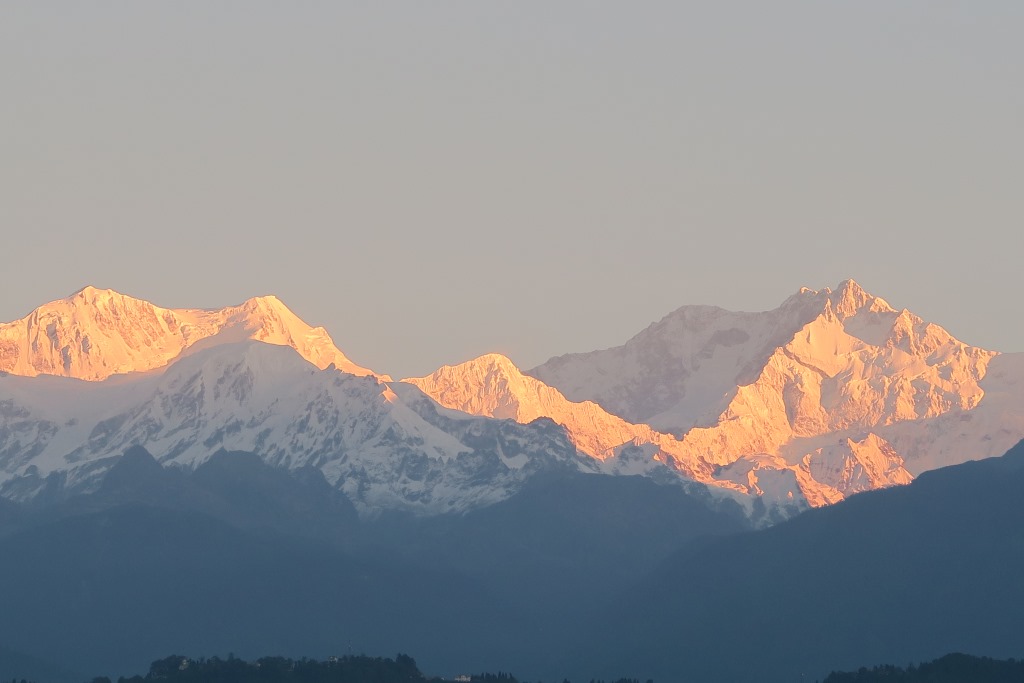SIKKIM - A FAIRY TALE KINGDOM
Sikkim is not an easy destination to reach. With a seldom operational airport at Pakyong, near the capital city of Gangtok due to its high-altitude, table-top runway that has for long struggled with visibility concern, the best and most guaranteed way to get to Sikkim is still via the winding highway from Bagdogra in the northern part of West Bengal.
After landing at the civil enclave of the Indian Air Force base station of Bagdogra, our adventure to the hill stations of NE India begins. Leaving the lowland tea plantations at Siliguri, our uphill climb starts. After a five hours' drive and clearing the border controls (an Inner Line permit is required for entering Sikkim), we enter into Gangtok, a hill station located in the eastern part of the state that is incredibly alluring, pleasantly boisterous and wreathed in clouds. This is the only busiest part of the whole 'kingdom,' state. The people of Sikkim is made up of a number of ethnic groups, mainly Bhutia, Lepcha and Nepali, the latter who were brought in by the British to work on the tea plantations and remained. The Lepchas claim to be the original inhabitants of Sikkim while the Bhutias emigrated from neighboring Tibet and form the majority here.
Sikkim was an independent kingdom in a remote part of the Himalayas ruled by a hereditary line of kings (Chogyal) from the 17th century until it became a British protectorate, then an Indian protectorate in 1950. Straddled between the sensitive borders of Indian and China, it is also the home of the 3rd highest mountain in the world - Kanchenjunga. To appreciate the fairy tale beauty and essence of Sikkim, one must read about the book called "Sikkim - A Requiem for a Himalayan Kingdom" where the last Chogyal married Hope Cooke, an American student, who then became the Queen of Sikkim and lived with the king and their children during the final years of the kingdom. Due to this fairy-tale romance, Sikkim became well known in America and the world over through major magazines and newspapers.

To explore Sikkim, normally the first timer would cover the Eastern and Western parts of Sikkim. The capital is located in the east but there is always a chance to explore the north to a place called Tsomgo Lake where one reaches the altitude just above 4 000 msl and where yaks inhabit. Scores of Indian tourists (mainly from West Bengal) would have a thrilling time playing in the snow during the cold season or enjoying a yak safari around the lake. Along the way to the lake, one will not forget the sights of Indian army camps that are stand by to guard the Indian-China border. Then to the west, the highlight is to catch sight of Mount Kanchenjunga at 8 586 msl. Enroute one will not fail to realise that mostly perched atop mountains, Buddhist monasteries are scattered across the length and width of Sikkim, the famous of which is the Pemayangtse Monastery near Pelling where good class tourist hotels can be found.
To the repeat traveller, Sikkim has much more to offer. One highlight is Lachung, a mountain village close to the Tibetan border, in the northeastern Indian state of Sikkim. It's divided by the Lachung River. The village is home to the 19th-century Buddhist Lachung Monastery, surrounded by apple orchards. Nearby, the Yumthang Valley's Shingba Rhododendron Sanctuary protects many species of rhododendron. The valley is also known for its waterfalls, pine forests and hot springs. Getting there is an adventure itself as one will be tempted to make unplanned endless stops to admire and photograph the striking scenery. With hardly any traffic, such temptation becomes an invitation. And soon you reach one of the most beautiful villages right at the foothill of the Himalayas!

TBC
 +65 9732 5692
+65 9732 5692  info@isetravel.com
info@isetravel.com  Search
Search